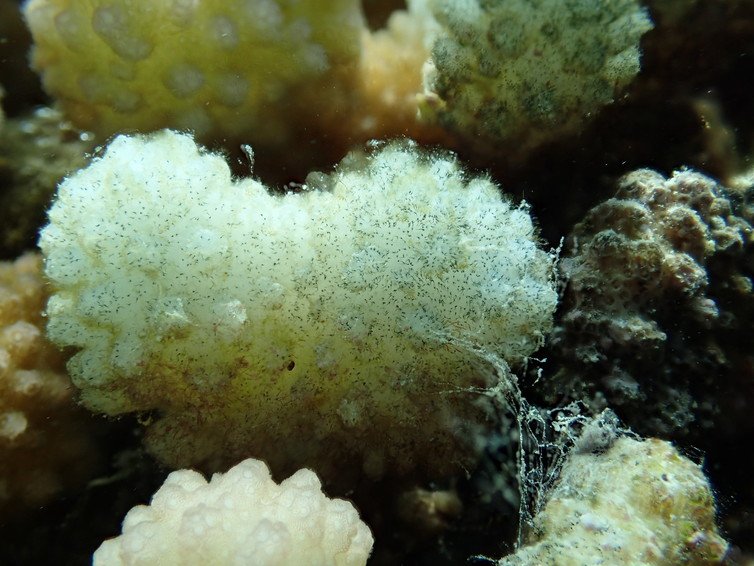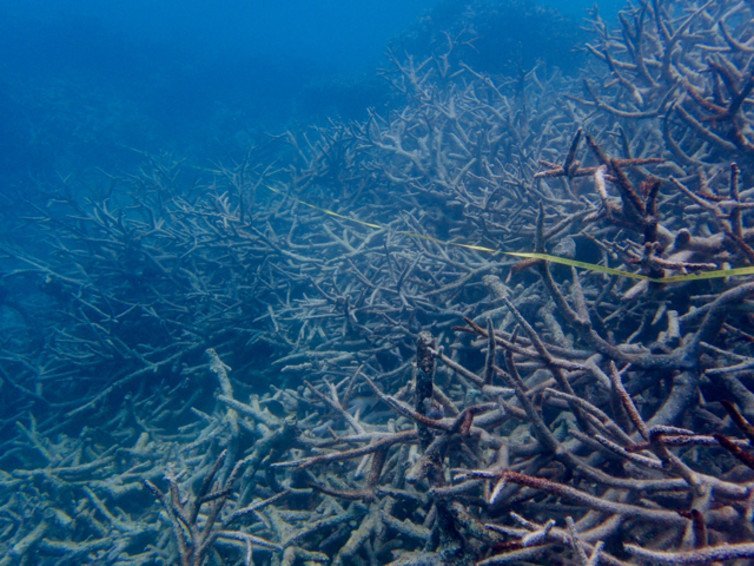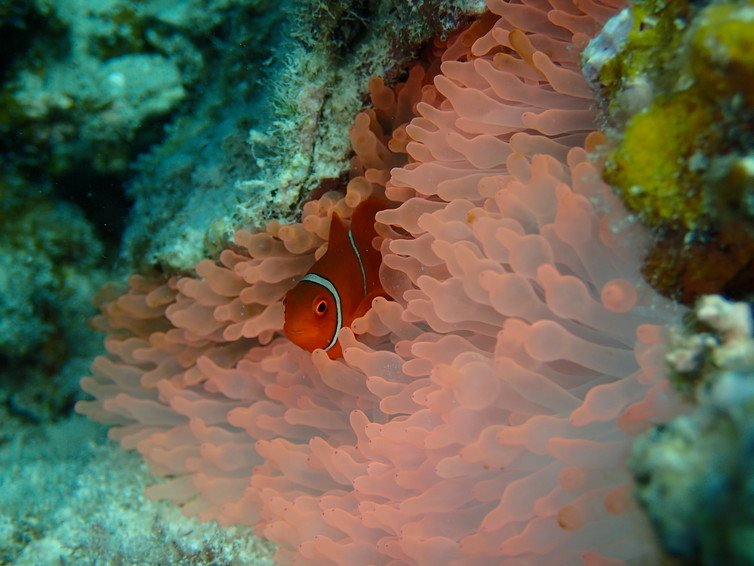Will the Great Barrier Reef recover from its worst-ever bleaching?

A FIFTH OF THE GREAT BARRIER Reef’s corals are dead after the worst bleaching event on record. Most of these deaths occurred in the northern part of the reef above Lizard Island.
Months after the bleaching event, research teams are now taking stock of the damage. Corals can recover from bleaching. But in a changing world they will have less time to do so before the next event.
Bleaching 101
Reef-building corals are animals that live symbiotically with one-celled algae (a species of dinoflagellate known as Symbiodinium, or colloquially as zooxanthellae).
The coral host provides safe habitat within its cells and supplies nutrients, while the algae in return feeds the coral with products from photosynthesis. This partnership is highly efficient. It allows stony corals that require a lot of energy to produce their skeletons to thrive in nutrient-poor tropical waters. But it is also a fragile balance.
Environmental stress, most commonly caused by increased water temperatures and elevated light conditions, can cause the zooxanthellae to produce too much reactive oxygen species, which is toxic to the coral. So the coral expels the algae.
This is what is actually happening when a coral “bleaches”. Expelling 90% or more of the algae, the coral’s skeleton becomes visible through its tissues.
A bleached coral can stay alive but is deprived of its primary food source and will begin to starve. Its metabolism suffers, the immune system becomes compromised, it becomes more susceptible to disease, and defence against coral predators, such as snails known as Drupella, is weakened.

Survivors of the bleaching are suffering from increased predation pressure. Drupella snails aggregate on the remaining live corals around Lizard Island following the 2016 bleaching event. (Image credite: Greg Torda)
Depending on the intensity and duration of environmental stress, corals can die from the immediate impacts of a severe heat stress; starvation; disease or being eaten.
If conditions get better, corals can regain their symbiotic algae – and with it their brownish colour – from the surrounding water or from the multiplication of the remnant algae within their cells. In this way individual coral colonies can recover.

Corals weakened by heat stress are more susceptible to coral diseases. Here, skeletal eroding band disease is slowly killing a Pocillopora colony in the aftermath of the 2016 bleaching event. (Image credit: Greg Torda)
Different coral species bleach at different stress levels, and some species are more likely to die directly from the conditions that cause bleaching.
For example, the fastest-growing corals are highly effective at capturing light to feed their algal fuel cells. Even under normal conditions they are living close to their maximum tolerance of temperature and light. These corals are far more susceptible to more light and temperature than other, slower growing corals.
Incidentally, these fast-growing corals are also the ones that provide the bulk of the intricate three-dimensional structure to the reef that is critical to most reef critters, including fish. Because of their enhanced metabolism, fast-growing corals also die in greatest numbers during bleaching events, therefore they have been considered the losers of coral bleaching.

Field of recently dead staghorn corals. These corals still provide habitat for some reef critters, but will soon erode to rubble. (Image credit: Greg Torda)
Reef recovery
Due to the variability in bleaching and coral deaths, even moderate bleaching events can decrease the amount of live coral on the reef’s structure and can dramatically alter the species composition.
The recovery of the reef after a disturbance, such as a bleaching event, happens when the amount of live coral covering the reef, the structural complexity, and the composition of the coral community all return to the levels prior to disturbance.
This requires the re-colonisation of the reef by coral propagules (larvae or fragments) that grow into large mature colonies over the course of years and decades.
In severe bleaching events, such as the most recent 2016 mass bleaching event on the Great Barrier Reef and in parts of the remote Pacific Ocean, even the more thermally-tolerant, slow-growing corals severely bleached; several locations suffered large numbers of coral deaths.
The loss of slow growing corals is particularly alarming, because replacing these colonies will require decades, and in some cases centuries, to return the reefs to what they were just a short time ago.
It is unlikely that the reefs affected by the 2016 event in the northern Great Barrier Reef will recover for many decades.

Other symbiotic organisms such as this anemone can also bleach when stressed.(Image credit: Greg Torda)
Will there be a next time?
It is highly unlikely that reefs will get the decades they need to recover – in fact, the frequency of bleaching events is increasing.
Current trends in ocean temperature and future predictions suggest bleaching will occur each year within the coming decades. Some reefs around the world have just experienced consecutive years of bleaching, with barely any opportunity for colonies, let alone reefs, to recover.
Can corals adapt or acclimatise to elevated water temperatures over the course of a few years? Corals inhabiting unusually warm waters, such as the Persian Gulf and some areas of the Coral Triangle, demonstrate that long-term adaptation to a high temperature regime has been possible.
However, evidence to date suggests that these adaptive processes are unlikely to be able to keep up with climate change.
Action to reduce atmospheric CO2 levels, and halt the associated warming, must be quickly and vigorously pursued to avert the predicted degradation of coral reefs. If this is not undertaken, the consequences for reefs will only be amplified from what we have seen this year.
![]()
Tracy Ainsworth, Research Fellow, ARC Centre of Excellence for Coral Reef Studies, James Cook University; Greg Torda, Postdoctoral research fellow, James Cook University, and Scott Heron, Physical Scientist, National Oceanic and Atmospheric Administration
This article was originally published on The Conversation. Read the original article.
READ MORE:
- Great Barrier Reef almost impossible without climate change
- The Great Barrier Reef’s new normal is a forlorne sight
- 2500 coral experts plead for better management of Great Barrier Reef

